
Port of Varna is the largest seaport complex in Bulgaria. Located on the Black Sea's west coast on Varna Bay, along Lake Varna and Lake Beloslav, it also comprises the outlying port of Balchik. It has a significant further development potential with 44 km (27 mi) of sheltered inland waterfront on the lakes alone, easily accessible by road and railroad and adjacent to Varna International Airport.
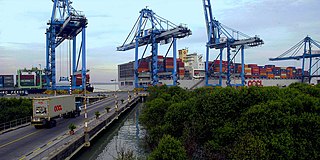
Port Klang is a town and the main gateway by sea into Malaysia. Known during colonial times as Port Swettenham but renamed Port Klang in July 1972, it is the largest port in the country. It is located about 6 kilometres (3.7 mi) southwest of the town of Klang, and 38 kilometres (24 mi) southwest of Kuala Lumpur.

The Port of Singapore is the collection of facilities and terminals that conduct maritime trade and handle Singapore's harbours and shipping. It has been ranked as the top maritime capital of the world, since 2015. Currently the world's second-busiest port in terms of total shipping tonnage, it also transships a fifth of the world's shipping containers, half of the world's annual supply of crude oil, and is the world's busiest transshipment port. It was also the busiest port in terms of total cargo tonnage handled until 2010, when it was surpassed by the Port of Shanghai.

The Port of Savannah is a major U.S. seaport located at Savannah, Georgia. As of 2021, the port was the third busiest seaport in the United States. Its facilities for oceangoing vessels line both sides of the Savannah River and are approximately 18 miles (29 km) from the Atlantic Ocean. Operated by the Georgia Ports Authority (GPA), the Port of Savannah competes primarily with the Port of Charleston in Charleston, South Carolina to the northeast, and the Port of Jacksonville in Jacksonville, Florida to the south. The GPA operates one other Atlantic seaport in Georgia, the Port of Brunswick. The state also manages three interior ports linked to the Gulf of Mexico: Port Bainbridge, Port Columbus, and a facility at Cordele, Georgia linked by rail to the Port of Savannah. In the 1950s, the Port of Savannah was the only facility to see an increase in trade while the country experienced a decline in trade of 5%. It was chaired and led by engineer Dr. Blake Van Leer.
Johor Port is a port in Pasir Gudang, Johor, Malaysia, built in 1977. It is an integrated multi-purpose port facility providing bulk cargo, container and general cargo services. It is the world's largest palm oil terminal and ranks third globally in terms of LME cargo volume.
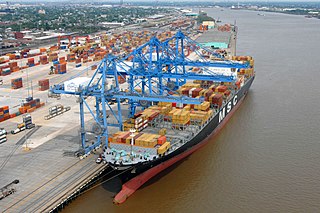
The Port of New Orleans is a significant transport hub located in Louisiana, United States. It serves as an embarkation point for cruise passengers and Louisiana’s sole international container port.

Jawaharlal Nehru Port, also known as JNPT and Nhava Sheva Port, is the second largest container port in India after Mundra Port. Operated by the Jawaharlal Nehru Port Trust Authority (JNPTA), it is located on the eastern shores of Arabian Sea in Navi Mumbai, Raigad district, Maharashtra. This port can be accessed via Thane Creek, a nodal city of Navi Mumbai. It is the main port of the Mumbai Metropolitan Region after Mumbai Port, also of Maharashtra and Western India. Its common name derives from the names of Nhava and Sheva villages that are situated here. It is also the terminal of the Western Dedicated Freight Corridor.

Westports Malaysia Sdn Bhd is a multi-cargo terminal located on Pulau Indah, Port Klang, Malaysia which is accessible by road via Pulau Indah Expressway, connecting to the KESAS Highway. On 1 October 2013, Pulau Indah was directly connected to the Malaysian Administrative Capital, Putrajaya via the South Klang Valley Expressway.
International Container Terminal Services, Inc. (ICTSI) is a global port management company headquartered in Manila, Philippines. Established on December 24, 1987, ICTSI is the Philippines' largest multinational and transnational company, having established operations in both developed and emerging market economies in Asia Pacific, the Americas, and Europe, the Middle East and Africa. The company is ranked the eighth largest container terminal operator, according to TEU equity volume.
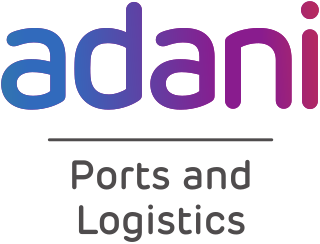
Adani Ports and Special Economic Zone Limited is an Indian multinational port operator and logistics company, based in Ahmedabad, India. A subsidiary of Adani Group, APSEZ is India's largest private port operator with a network of 12 ports and terminals, including India's first deep water Transshipment Port Vizhinjam International Seaport Thiruvananthapuram and India's first port-based SEZ at Mundra.
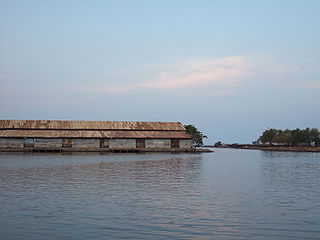
The Port of Cirebon is a multipurpose seaport in the city of Cirebon on the north coast of the Indonesian island of Java.

Port of Tanjung Priok is the busiest and most advanced Indonesian seaport, handling more than 50% of Indonesia's trans-shipment cargo traffic. The port is located at Tanjung Priok, North Jakarta, which is operated by Indonesian state owned PT Pelindo. The port loaded and unloaded 6.2 million, 6.92 million, and 7.8 million TEUs of cargo during 2016, 2017 and 2018 respectively, out of a total capacity of about 8 million TEUs. The container port ranked as 22nd busiest in the world by Lloyd's One Hundred Ports 2019.

The Port of Colombo Sinhala: කොළඹ වරාය, Tamil: கொழும்பு துறைமுகம் is the largest and busiest port in Sri Lanka and the Indian Ocean. Located in Colombo, on the southwestern shores on the Kelani River, it serves as an important terminal in Asia due to its strategic location in the Indian Ocean. During the 1980s, the port underwent rapid modernization with the installation of cranes, gantries and other modern-day terminal requirements.
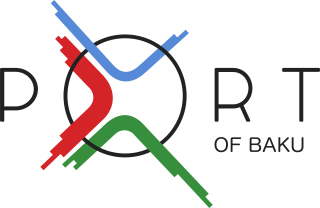
Port of Baku is a sea port located in the Bay of Baku, on the coast of city of Baku, Azerbaijan. The main entrance faces the Neftchiler Avenue.

SOCEP Constanţa is a port operator of the Port of Constanţa in Romania. The company was established in 1991 and specializes in stevedoring services and the development of container and steel materials. Having been fully privatized in 1996, Socep is one of the largest port operators in Romania.

Lekki Deep Sea Port, is a multi-purpose, deep sea port in the Lagos Free Zone and is the only currently operating deep sea port in the country, having started full commercial operations in April 2023.
The Port of Rijeka is a seaport in Rijeka, Croatia, located on the shore of the Kvarner Gulf in the Adriatic Sea. The first records of the port date to 1281. It was the main port of the Kingdom of Hungary in the 19th century and the beginning of the 20th century, of Yugoslavia between World War II and 1991, and of Croatia after its independence. Today, it is the largest port in Croatia with a cargo throughput of 13.6 million tonnes (2020), mostly oil, general cargo and bulk cargo, and 344,091 Twenty-foot equivalent units (TEUs).

The Port of Charleston is a seaport located in South Carolina in the Southeastern United States. The port's facilities span three municipalities—Charleston, North Charleston, and Mount Pleasant—with six public terminals owned and operated by the South Carolina Ports Authority (SCPA). These facilities handle containers, motor vehicles and other rolling stock, non-containerized goods and project cargo, as well as Charleston's cruise ship operation. Additional facilities in the port are privately owned and operated, handling bulk commodities like petroleum, coal and steel.

Mundra Port is India's first private port, largest container port and largest commercial port, located on the northern shores of the Gulf of Kutch near Mundra, Kutch district, Gujarat. Formerly operated by Mundra Port and Special Economic Zone Limited (MPSEZ) owned by Adani Group, it was later expanded into Adani Ports & SEZ Limited (APSEZ) managing several ports. In FY 2020–21, Mundra Port handled 144.4 million tonnes of cargo. The port currently handles over 155 MT, which constitutes nearly 11 per cent of India’s maritime cargo. The port also handles nearly 33 per cent of India’s container traffic.
Apapa Port Complex also known as the Lagos Port Complex is Nigeria's largest and busiest port complex. The complex consist of a number of facilities including Apapa quays, Third Apapa Wharf Extension, Apapa Dockyard, Apapa Petroleum Wharf, Bulk Vegetable Oil Wharf, Ijora Wharf, Kirikiri Lighter Terminal, and Lily pond inland container terminal. Financed and built by the colonial government of Nigeria, It became the nation's busiest port for exporting agricultural produce from the provinces of Western and Northern Nigeria in the late 1920s. Administration was transferred to the Nigerian government upon the granting of self-government and In 2005, the complex was divided into terminals and contracted out to private operators with NPA acting as the landlord and regulator.

















